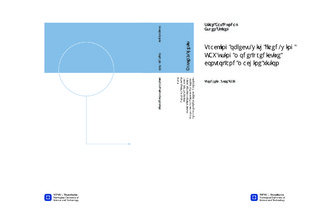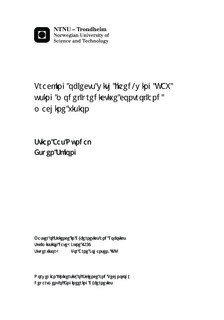| dc.description.abstract | This thesis describes the development of an object tracking system for unmanned aerial vehicles (UAVs), intended to be used for search and rescue (SAR) missions. The UAV is equipped with a two-axis gimbal system, which houses an infrared (IR) camera used to detect and track objects of interest, and a lower level autopilot. An external computer vision (CV) module is assumed implemented and connected to the object tracking system, providing object positions and velocities to the control system. The realization of the object tracking system includes the design and assembly of the UAV s payload, the design and implementation of a model predictive controller (MPC), embedded in a larger control environment, and the design and implementation of a human machine interface (HMI). The HMI allows remote control of the object tracking system from a ground control station. A toolkit for realizing optimal control problems (OCP), MPC and moving horizon estimators (MHE), called ACADO, is used. To gain real-time communication between all system modules, an asynchronous multi-threaded running environment, with interface to external HMIs, the CV module, the autopilot and external control systems, was implemented. In addition to the IR camera, a color still camera is mounted in the payload, intended for capturing high definition images of objects of interest and relaying the images to the operator on the ground. By using the center of the IR camera image projected down on earth, together with the UAV s and the objects positions, the MPC is used to calculateway-points, path planning for the UAV, and gimbal attitude, which are used as control actions to the autopilot and the gimbal. Communication between the control system and the autopilot is handled by DUNE. If multiple objects are located and are to be tracked, the control system utilizes an object selection algorithm that determines which object to track depending on the distance between the UAV and each object. If multiple objects are clustered together, the object selection algorithm can choose to track all the clustered objects simultaneously. The object selection algorithm features dynamic object clustering, which is capable of tracking multiple moving objects. The system was tested in simulations, where suitable ACADO parameters were found through experimentation. Important requirements for the ACADO parameters are smooth gimbal control, an efficient UAV path and acceptable time consumption. The implemented HMI gives the operator access to live camera streams, the ability to alter system parameters and manually control the gimbal. The object tracking system was tested using hardware-in-loop (HIL) testing, and the results were encouraging. During the first flight of the UAV, without the payload on-board, the autopilot exhibited erroneous behavior and the UAV was grounded. A solution to the problem was not found in time to conduct any further flight tests during this thesis. A prototype for a three-axis stabilized brushless gimbal was designed and 3D printed. This was as a result of the two-axis gimbal system s limited stabilizationcapabilities, small range of movement and seemingly fragile construction. Out of a suspected need for damping to improve image quality from the still camera, the process of designing and prototyping a wire vibration isolator camera mount was started. Further work and testing is required to realize both the gimbal and dampened camera mount. The lack of flight tests prohibited the completion of the object tracking system.Keywords: object tracking system, unmanned aerial vehicle (UAV), search and rescue,two-axis gimbal system, infrared (IR) camera, computer vision (CV), model predictivecontrol (MPC), control environment, human machine interface (HMI), remote control, ground control, ACADO, real-time, asynchronous multi-threaded running environment, way-point, path planning, DUNE, dynamic object clustering, multiple moving objects, hardware-in-loop (HIL), three-axis stabilized brushless gimbal, wire vibration isolator | nb_NO |

